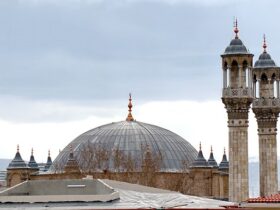The Arab-Israeli conflict has acquired a place for itself as one of the longest-surviving and most ingrained conflicts to have survived through the history of the contemporary world. It is a tale of pain and hope, negotiation and loss, all chronicled within the scope of a struggle between these two entities, whose tension has persevered much against all for so long a while. So let us lean back and discuss decodable facets in detail concerning the very subject keeping a score over millions of life instances.
The Roots: A Complicated Genesis
It did not spring from nowhere; it was born in the late 19th and early 20th centuries. Imagine the Ottoman Empire, presiding over much of the Middle East, including what would someday become Israel and Palestine, and Jews in Europe undergoing persecution to such a degree that some started dreaming aloud of a home where they would be safe, a movement known as Zionism.
Now throw into this landscape Arab communities indigenous to the land for generations upon generations, to whom this was home and livelihood, not geography. The very thought of other people coming in now to lay claims to it did not easily sit well with many.
Things changed dramatically following World War I. The Ottoman Empire fell, and the British acquired Palestine under a mandate from the League of Nations. In 1917, the British issued the Balfour Declaration, voicing support for a “national home for the Jewish people” in Palestine. Arab leaders felt betrayed. They hoped for independence.
The Turning Point: 1948
Fast forward to 1948 when it all changed: the United Nations laid down a partition in which Palestine would be divided into a Jewish and Arab state, while Jerusalem was supposed to become an international city. Whereas the Jews accepted it, the Arab leaders rejected it outright on such grounds that it did not treat them fairly enough.
When the British withdrew in May 1948, Israel declared independence. What followed was the 1948 Arab–Israeli War, as neighboring Arab states invaded. That war ended with armistice agreements but left deep scars. Hundreds of thousands of Palestinians became refugees-a tragedy they refer to as the Nakba, or catastrophe.
I once met a family visiting Jordan from Palestine who told me stories of how their grandparents were made to leave their village, literally with the clothes on their bodies. These are personal accounts that are heavy to listen to and often hard to grapple with.
Ongoing Struggles: Land, Identity, and Power
It was a structurally identitarian territorial conflict, which in fact would then mutate even more, not only from 1948 onward: wars that shaped the borders and lives at periodic junctures-for example, 1956, 1967, and 1973.
The turning point came with the 1967 Six-Day War: Israel captured the Gaza Strip, West Bank, East Jerusalem, and the Golan Heights. That was for the Palestinians the beginning of a long, protracted occupation. Imagine waking up one morning to find that your town has been encircled by soldiers. Palestinians face this reality to this very day.
In the 1990s, the Oslo Accords gave reason to hope. These agreements between Israeli and Palestinian leaders outlined a way toward a two-state solution. Optimism proved short-lived as the violence restarted. Each side blamed the other for failed negotiations; the mistrust runs deep.
Why Is This Conflict So Hard to Resolve?
The Arab-Israeli War is a war of identity, history, and survival-not of borders. To the Israelis, it was one of the sanctity of a haven after centuries of persecution, while to the Palestinians, it was a matter of restoration of home ground and an end to occupation.
One big obstacle is Jerusalem; Israelis and Palestinians both claim it as their capital, and neither will budge. Another is the settlements – Israeli communities built on land Palestinians claim for their future state. This is like trying to split a house where one family keeps moving furniture into your room. That’s kind of the dynamic.
A Glimmer of Hope
A glimmer of hope shines despite setbacks. Grassroots organizations push to bring Israelis and Palestinians in with mutual understanding through the common purposes of dialogue. I, once visiting Tel Aviv, took part in a peace-enhancement workshop represented by youth with several sharing of stories; that tumbled me down was simply a reminder: that ordinary people do wish that every easily enable to live in peace.
Human Cost
This is not an issue of politics; it’s an issue of the people. On either side, families mourn lost loved ones to violence. Children grow up in fear, communities bear economic hardships, and there is human cost inestimable.
In conclusion,The road to peace is long and unsure. Be that as it may, many analysts still believe a two-state solution is the best way ahead, but such would entail compromise, trust, and international support. While the negotiations from above the governments and leaders in charge would be grassroots, from below, from the people’s view, for him to come given the others as a human being instead of an enemy.
I have found that no matter how complex an issue may seem, clarity usually follows human understanding of it. This is not an exception when it comes to the Arab-Israeli conflict.


































Leave a Review